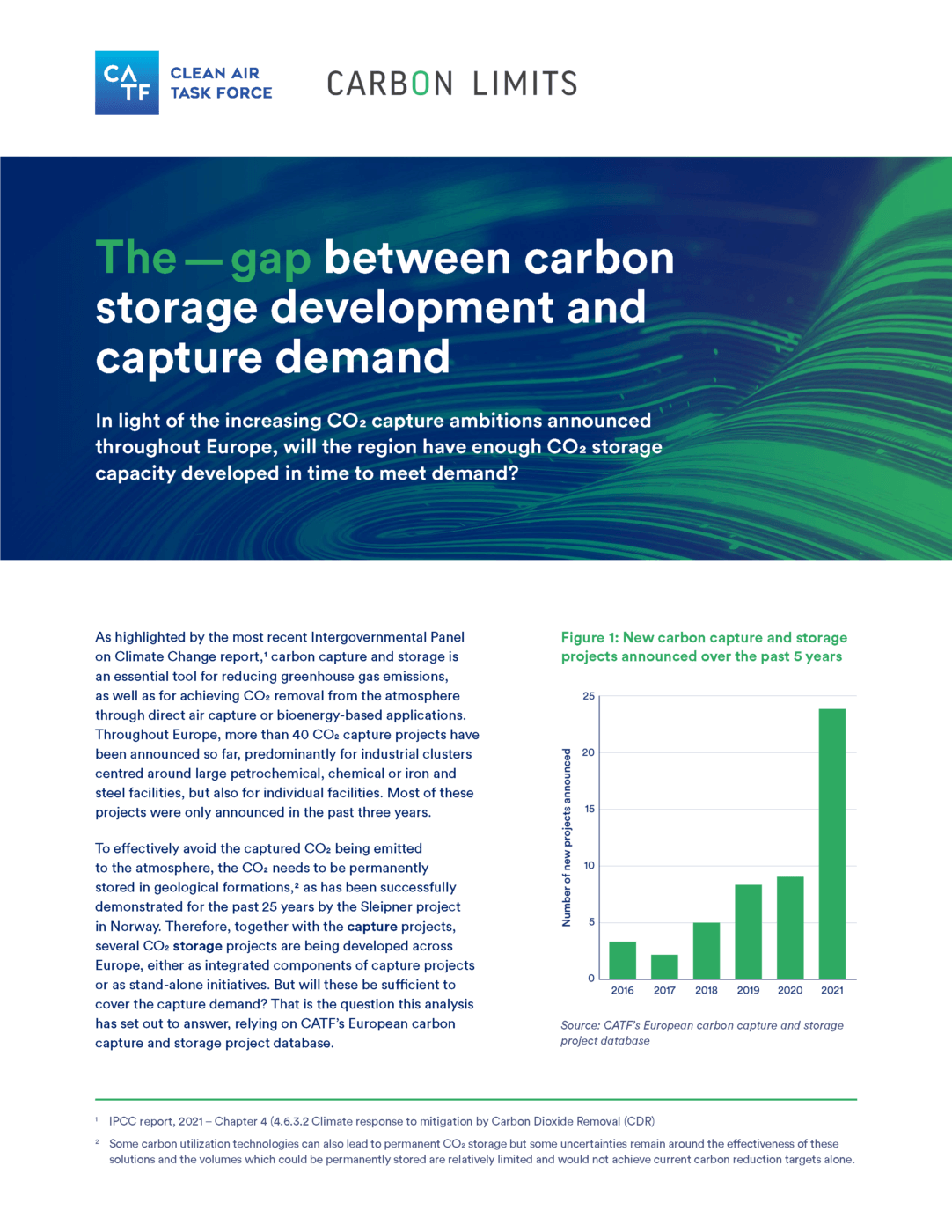Europe’s gap between carbon storage development and capture demand

In response to rising carbon prices and binding net zero targets, more and more polluting industries in Europe have announced their intention to capture their CO2 emissions for permanent geological storage. The CATF project map indicates around 50 such initiatives across diverse sectors and geographies, amounting to over 80 Mt captured per year by 2030. But will there be enough storage space to accommodate all this CO2?
Europe is blessed with abundant suitable geology for the storage of CO2, with a theoretical capacity estimated at over 500 Gt – over 100 years-worth of current emissions. However, developing new CO2 storage sites can take several years, requiring extensive geological characterisation, trial injections, and permitting processes. Many of the CO2 capture projects announced today are relying on the availability of a handful of storage sites currently under development in the North Sea.
Analysis by Carbon Limits for CATF estimates that by 2030 the available storage capacity will amount to around half the volume of captured CO2, based on currently announced projects. By 2032, this gap falls slightly to 40% of total demand as more storage sites are commissioned.
Carbon capture and storage is an essential technology for achieving net zero targets by 2050, but CO2 storage capacity must be available to meet demand which is only likely to grow further. This will require coordinated, long-term planning from governments and industry, investment in geological characterisation, and a streamlining of processes needed to develop new storage sites. Such measures are even more pressing for those parts of Europe without access to the North Sea.


